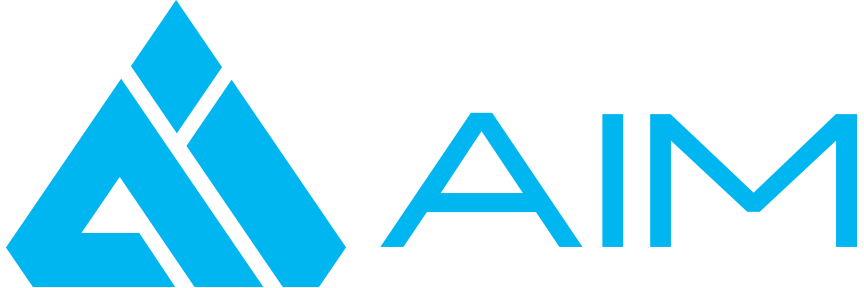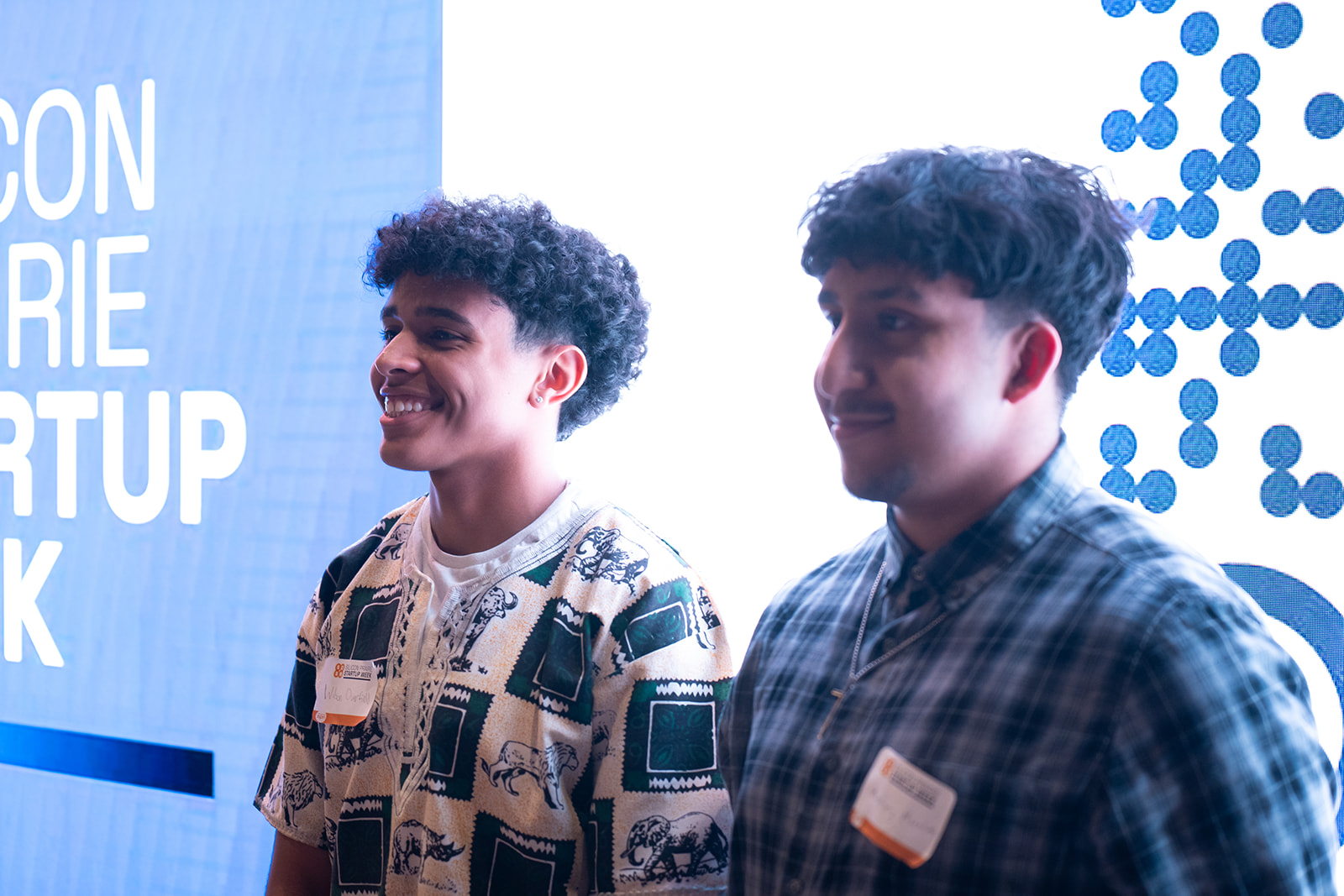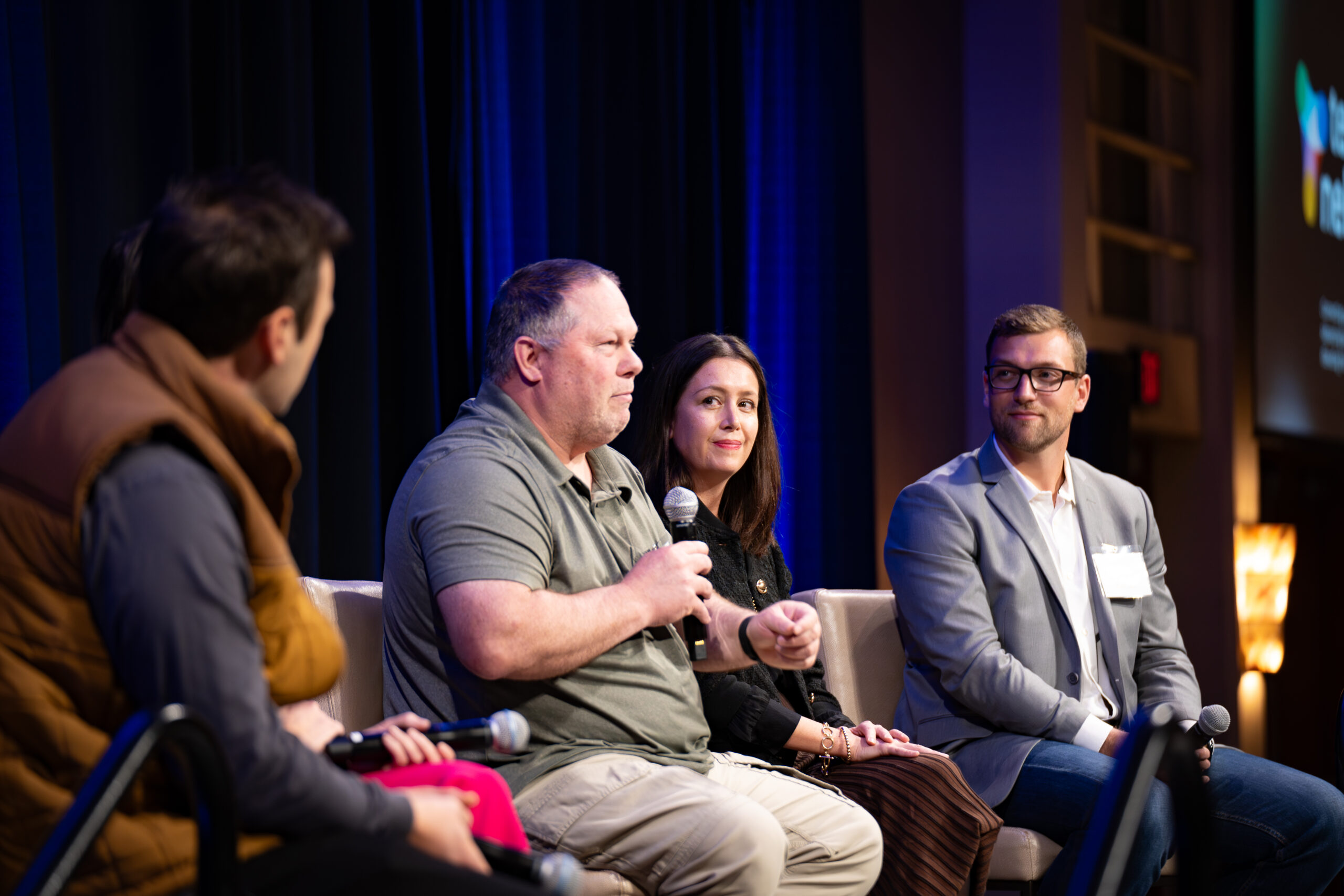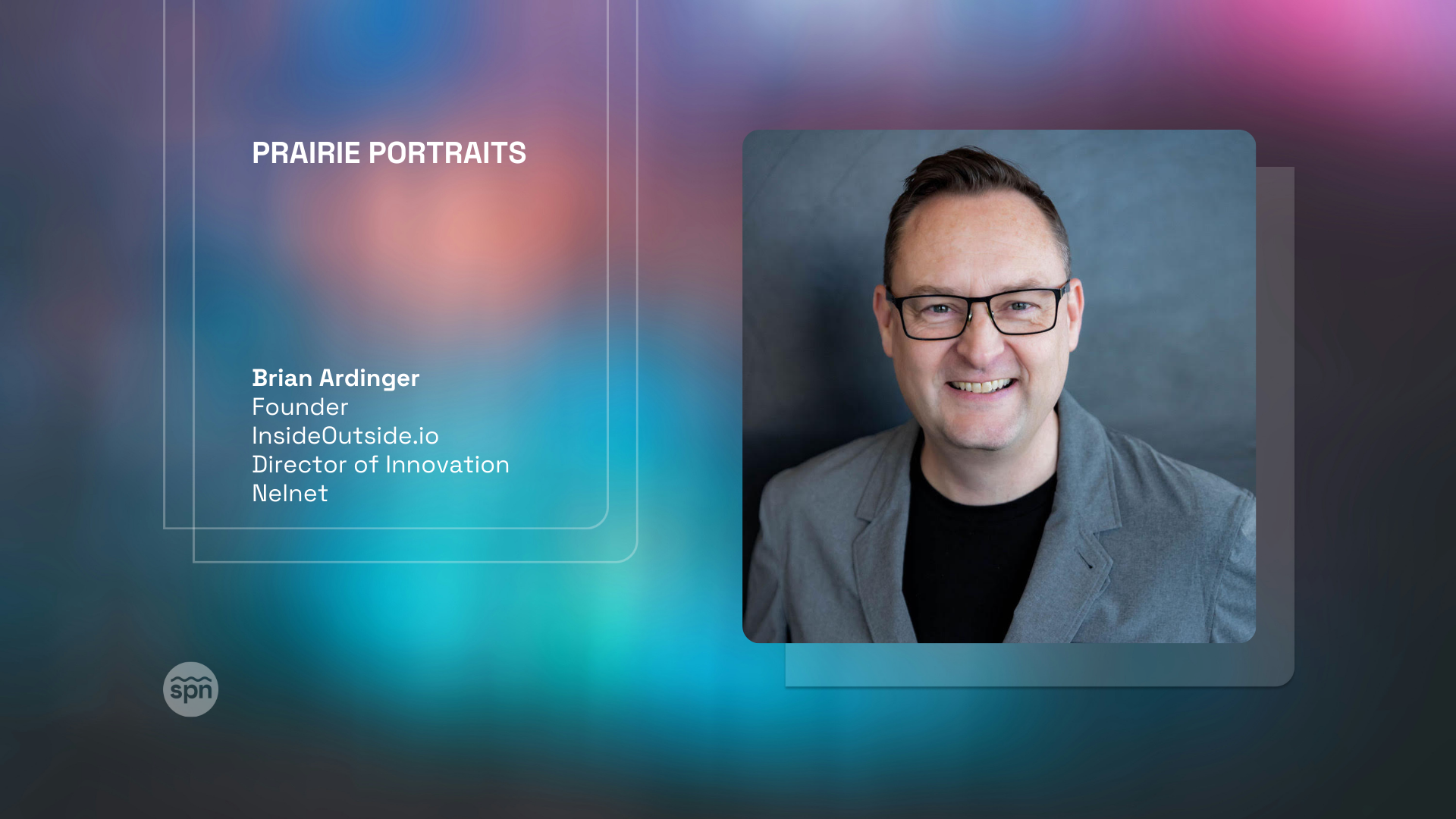
Raikes School director Dr. David Keck (standing) has made interdisciplinary design a point of emphasis recently.

Last year, the director of the University of Nebraska-Lincoln‘s Jeffrey S. Raikes School of Computer Science and Management told us that, over the past decade, the focus of many Raikes students has shifted from landing a job with a West Coast tech giant to staying in the Midwest and working for local startups.
Ever since, I have wondered why that is. So I recently went back to Dr. David Keck, the Raikes School’s director, to get his take.
“That’s a growing trend that I think will expand,” Keck said.
Keck suggested that if Raikes School faculty and staff deserve credit for that shift in thinking — “And we may not,” he said — it could stem from their efforts to center curriculum examples around small businesses and startups.
“When you’re teaching 20-year-olds, if you start teaching them big company management, they can’t relate to that,” Keck said. “But they can all relate to what they would do if they started a business.”
He also said Raikes School faculty and staff strives to make curriculum “student-centered,” to give the school’s students value and motivation to stick with it and graduate, rather than dropping out in favor of programs like Y Combinator.
But there’s a bit more to the story. After talking with Keck for just a few minutes, it becomes clear that the Raikes School has, in fact, evolved and is about to move into a third phase under Keck’s leadership.
In the beginning
Established in 1999 as the J.D. Edwards Honors Program in Computer Science and Management, the Raikes School is a joint venture between UNL’s College of Business Administration and Department of Computer Science and Engineering.
In the beginning, Raikes School faculty and staff had to figure out what it meant to be not just “multi-disciplinary,” but “interdisciplinary,” creating connections between the computer science and business curriculum.
Over time, Keck said, they stitched together connectivity between the subjects and cultivated industry relationships that enrich, in particular, the school’s Design Studio capstone course, which he describes as “the ultimate connectivity.”
Phase 2
About three years ago, the school’s biannual advisory board meetings took on a tone of “what are we going to do next?” Keck said. So the school’s leaders began contemplating what Keck calls “two of the world’s greatest buzzwords” — innovation and leadership.
Innovation is something more than entrepreneurship, he said. It varies from “lean” startups in the “pre-small business phase, still searching for the right product configuration and market” to envelope-pushing researchers at tech giants like Google and Apple.
“We can’t teach a course in innovation, really, so let’s think about what it means,” Keck said. “We’re really teaching them decision-making and problem-solving in a scenario of relatively incomplete information.”
Keck said what his students need to learn is, “How do you do something new and blow up the equilibrium and still have some models that help you figure out what’s going to happen?”
Weaving these two “buzzwords” into the Raikes curriculum and actually producing innovative leaders “is a lifetime of work,” Keck said. “Some progress each year is great, as good as it gets.”
The horizon
Yet that’s not all Keck is aiming for. He has been contemplating some new concepts that could be expected to creep their way into Raikes School curriculum.
For starters, he seeks inspiration from the Institute of Design at Stanford University, which bills itself as “a hub for innovators” and “design thinking” combining “engineering, medicine, business, law, the humanities, sciences, and education.”
Keck said he and the rest of the Raikes School’s faculty and staff are spending time studying the Stanford model and trying to determine how to become “leaders in interdisciplinary design.”
“It’s all very hard,” he said, “and we might have a chance to do it all here, with 120 students who are all pretty tolerant and high achievers.”
In addition, Keck is taking two “massive open online courses” or “MOOCs” at a time, through outlets like Coursera and Udacity. He describes them as “extraordinary topics taught by the best teachers with the newest ideas.”
“I think they will replace the textbook,” he said. “It’s going to revolutionize everything, and it’s happening now.”
He displays his MOOC certificates in his office, hoping that students take note of his example as a lifelong learner. Because ultimately, Keck said, “It’s great if they all become innovators, entrepreneurs, but I’d also like them all to be thought of as scholars.”
Credits: Photo from raikes.unl.edu.



